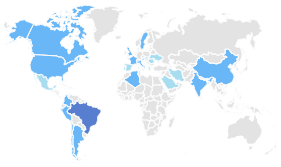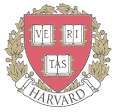GUANABARA BAY: Proposals for a Territory of Exclusion Born from Paradise – Part II, For a Macro-Engineering Covenant (BAÍA DE GUANABARA: Propostas para um Território de Exclusão Nascido do Paraíso - Parte II, Por um Pacto de Macro-Engenharia)
Resumo
Abstract: Previously, we discussed the prevailing regional eco-cultural situation of Guanabara Bay (GB), characterizing it as a true Exclusion Territory under the action of obviously stressful degenerative anthropogenic phenomena, which have dramatically affected all persons living in its vicinity. Having suggested actions that could mitigate the damages already caused to the environment and the population, this detailed article completes the general proposal presented in PART I of our research on the possible creation of a pipeline system transferring pressurized oceanic seawater extracted from the South Atlantic Ocean to the vast shallow interior of upper GB, presenting a viable alternative that can become useful to other similarly distressed nations in Earth’s biosphere. In summary, because of our confidence in the effectiveness of geographically large-scale ambitious megaproject plans for the orderly and sustainably use and enjoyment of both public and private urban spaces, our strongly suggestive study constitutes an aspirational Macro-Imagineering prospect for the recovery of the remaining mangrove forests, famed beaches and fishing activity within GB, rescuing and enhancing a potential quality of life for GB’s permanent bayfront human population.
Key words: Guanabara Bay, human quality of life, seawater pipeline system.
===========================================================================
Resumo: Anteriormente, discutimos a situação ecocultural vigente na Baía de Guanabara (BG), caracterizando-a como um verdadeiro Território de Exclusão sob a ação de fenômenos antrópicos degenerativos que afetam dramaticamente todas as pessoas que vivem em sua vizinhança. Tendo sugerido ações que poderiam mitigar os danos já causados ao meio ambiente e à população, este artigo detalha e completa a proposta geral apresentada na PARTE I de nossa pesquisa sobre a possível criação de um sistema de dutos transferindo água de mar aberto pressurizada, extraída do Atlântico Sul, para o interior raso da BG, apresentando uma alternativa viável que pode se tornar útil a outras nações igualmente afetadas pela degradação ambiental de suas regiões costeiras. Em suma, devido à nossa crença na eficácia de megaprojetos para o uso e o aproveitamento sustentável de espaços urbanos públicos e privados, o presente estudo, altamente sugestivo, constitui uma perspectiva macro-imaginativa para a recuperação dos manguezais, das praias famosas e das atividades de pesca na BG, resgatando e aumentando a qualidade de vida da população do seu entorno.
Palavras-chave: Baía de Guanabara, qualidade de vida, sistema de transferência de águas oceânicas.
Texto completo:
PDFReferências
Costa, L.A. et al. (July 2018). “Chemical and biological indicators of sewage river input to an urban tropical estuary (Guanabara Bay, Brazil)” Ecological Indicators 90: 513-518.
Aguiar, V.M et al. (August 2018) “Environmental assessment concerning trace elements and ecological risks at Guanabara Bay, RJ, Brazil” Environmental Monitoring and Assessment 190: 448.
Olivatto, G.P. et al. (February 2019) “Microplastic contamination in surface waters in Guanabara Bay, Rio de Janeiro, Brazil” Marine Pollution Bulletin 139: 157-162.
Silva, M.M. et al. (April 2019) “Dispersal of potentially pathogenic bacteria by plastic debris in Guanabara Bay, RJ, Brazil” Marine Pollution Bulletin 141: 561-568.
Hessler, S. (Ed.) (2018) Tidalectics: Imagining an Oceanic Worldview through Art and Science. The MIT Press. 240 pages.
Fonseca, E.M. et al. (20 September 2013) “Stormwater impact in Guanabara Bay (Rio de Janeiro): Evidences of seasonal variability in the dynamic of the sediment heavy metals” Estuarine, Coastal and Shelf Science 130: 161-168.
Mayr, L.M. et al. (1989) “Hydrobiological characterization of Guanabara Bay” pages 124-138 IN Magoon, O. and Neves, C. (Eds.) Coastlines of Brazil. New York: American Society of Civil Engineers.
Charlier, R.H. (1999) “Aquacide—an urgent need to legislate to protect: viewpoint and review” International Journal of Environmental Studies 56: 325-343.
Frank, T..O. (November 2014) “Neologisms in the Language of Tourism as Indicators of Innovativeness in Tourism” Academica Turistica Year 7: 73.
Gomes, O.V.O. et al. (2019) “Origin of salinity and hydrogeochemical features of porous aquifers from northeastern Guanabara Bay, Rio de Janeiro, SE-Brazil” Journal of Hydrology: Regional Studies 22: 1-15.
DOI: http://dx.doi.org/10.17648/calibre.v4i2.973
Apontamentos
- Não há apontamentos.
Direitos autorais 2020 Nilo Serpa, Richard Cathcart
Indexadores, Diretórios, Bases de Dados e Registros (Abstracted and Indexed in):

CALIBRE - Revista Brasiliense de Engenharia e Física Aplicada
ISSN Eletrônico: 2526-4192































